Come join us now, and enjoy playing your beloved music and browse through great scores of every level and styles!
Can’t find the songbook you’re looking for? Please, email us at: sheetmusiclibrarypdf@gmail.com We’d like to help you!
Table of Contents

Remembering Dizzy Gillespie, born on this day in 1917 (1917-1993).
Dizzy Gillespie: The Architect of Bebop and Jazz Ambassador to the World
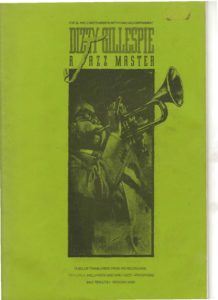
Search your favorite sheet music in the Sheet Music Catalog
John Birks “Dizzy” Gillespie stands as one of the most monumental figures in the history of jazz, a colossus whose influence stretches from the smoky clubs of 52nd Street to the farthest corners of the globe. He was not merely a participant in the jazz revolution of the 1940s; he was, along with Charlie Parker, its chief architect. A virtuoso trumpeter with a revolutionary technical and harmonic approach, a composer of enduring standards, a charismatic bandleader, a beloved educator, and a joyful ambassador who infused jazz with Afro-Cuban rhythms, Gillespie’s legacy is as vast as it is profound. His puffed-out cheeks and trademark bent-bell trumpet became symbols of a music that was intellectually rigorous yet irresistibly joyful.
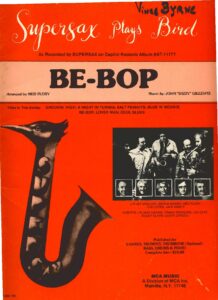
Please, subscribe to our Library.
If you are already a subscriber, please, check our NEW SCORES’ page every month for new sheet music. THANK YOU!
Biography: From Carolina to the World Stage
Dizzy Gillespie was born on October 21, 1917, in Cheraw, South Carolina. He was the youngest of nine children in a family where music was a constant presence. His father, a bricklayer and amateur bandleader, died when John Birks was just ten, but he left behind a collection of instruments that became the young boy’s playground. Gillespie was largely self-taught, possessing an almost preternatural gift for music. He initially taught himself trombone before settling on the trumpet.
In 1935, his formidable talent earned him a scholarship to the Laurinburg Institute in North Carolina, but his formal education was cut short when his family moved to Philadelphia in 1935. It was in the vibrant jazz scene of Philadelphia, and later New York, that he began his professional ascent. His early influences were the leading trumpeters of the swing era: Roy Eldridge, whom he initially emulated so closely he was dubbed “Little Roy,” and the pioneering Louis Armstrong.
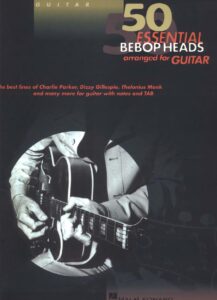
Browse in the Library:
Or browse in the categories menus & download the Library Catalog PDF:
Gillespie’s big break came when he joined the Teddy Hill Orchestra in 1937, replacing his idol, Eldridge. This gig took him to Europe for the first time, broadening his horizons. Throughout the late 1930s and early 1940s, he played in the big bands of some of the most prominent leaders of the day, including Cab Calloway, who famously fired Gillespie after an on-stage altercation involving a spitball and a knife. This incident, while dramatic, was symptomatic of the creative friction Gillespie was experiencing; his radical new musical ideas were often at odds with the commercial swing of his employers.
The crucible for these new ideas was the after-hours jam session. It was in clubs like Minton’s Playhouse in Harlem that Gillespie, pianist Thelonious Monk, drummer Kenny Clarke, and a young alto saxophonist from Kansas City named Charlie Parker began to forge a new musical language. They were deconstructing the popular songs of the day and rebuilding them with faster tempos, complex melodies, and advanced harmonies. This new language would come to be known as bebop.
The mid-1940s marked the full flowering of the bebop revolution. Gillespie and Parker, “Bird and Diz,” became the movement’s twin deities. Their small-group recordings for labels like Guild and Musicraft are the foundational texts of bebop, documents of breathtaking virtuosity and harmonic daring. While Parker was the transcendent, mercurial genius, Gillespie was the movement’s theoretician and evangelist. He could articulate the new music’s principles, write it down, and teach it to others.
In 1945, Gillespie formed his first big band, aiming to translate the energy and complexity of bebop into a larger ensemble format. Though financially unstable, this band was a creative triumph. More significantly, it was the catalyst for his next great innovation. He hired a young Cuban conguero named Chano Pozo. Their collaboration, beginning with the composition “Manteca” in 1947, fused the rhythmic complexity of Afro-Cuban music with the harmonic sophistication of bebop, creating a new genre: Afro-Cuban jazz (or Cubop).
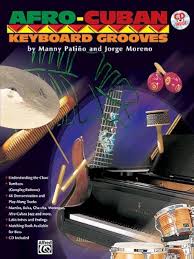
The 1950s saw Gillespie’s status solidify as a jazz elder statesman. He continued to lead small groups and big bands, toured extensively, and became one of the first jazz musicians to be sent abroad as a cultural ambassador for the U.S. State Department. His large ensemble, often featuring arrangements by Quincy Jones, was a powerhouse of modern jazz.
For the remainder of his career, until his death from pancreatic cancer on January 6, 1993, Gillespie remained a vital and active force. He led the United Nation Orchestra, which celebrated the pan-American scope of his music, and he became a beloved global figure, known as much for his warm personality, his beret and horn-rimmed glasses, and the ever-present bent trumpet, as for his musical genius.
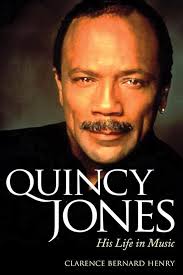
Music Style and Improvisational Licks: The Bebop Blueprint
Gillespie’s trumpet style was a radical departure from what came before. He possessed a phenomenal technique that allowed for breathtaking speed and agility in the upper register. His sound was bright, piercing, and laser-focused, a stark contrast to the warm, broad tone of his predecessors.
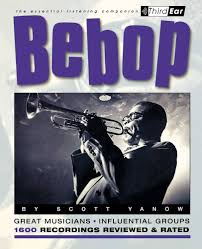
The core of his improvisational style was built on the principles of bebop harmony:
- Chromaticism and Enclosure: Bebop improvisers like Gillespie didn’t just play the notes of the underlying chord. They “enclosed” target chord tones by approaching them from a half-step above and below, creating a fluid, chromatic line. A lick over a C7 chord might approach the root (C) from the Db (above) and the B (below).
- Bebop Scales: Gillespie and his contemporaries popularized the use of what are now called “bebop scales.” These are major or dominant scales with an added passing tone (often a chromatic passing tone) to ensure that strong chord tones (root, third, fifth, seventh) fell on the downbeats when playing eighth-note lines. The bebop dominant scale, for example, is a Mixolydian mode with an added major seventh: C, D, E, F, G, A, Bb, B, C.
- Rhythmic Innovation: Bebop shifted rhythmic emphasis from the steady four-to-the-bar pulse of swing to a more fluid, syncopated approach. Gillespie’s lines were a torrent of eighth and sixteenth notes, often starting and ending on unexpected parts of the beat. His phrases were angular and unpredictable, avoiding the symmetrical four-bar phrasing of swing.
Characteristic Licks:
A quintessential Gillespie lick often combined arpeggios with chromatic passing tones. For example, over a ii-V-I progression in Bb (Cm7 – F7 – Bbmaj7), a typical Dizzy line might be:C, Eb, G, Bb (Cm7 arpeggio) | A, Ab, G, F, E, Eb (chromatic approach to the 3rd of Bb) | D, F, A, C (Bbmaj7 arpeggio starting on the 9th).
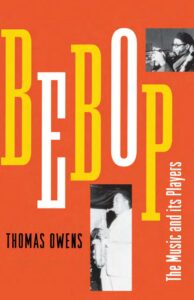
Another trademark was his use of wide, unexpected intervals, particularly the tritone (the “flatted fifth,” which became a hallmark of bebop), and his ability to play long, flowing lines at blistering tempos without losing clarity or harmonic intent.
Cooperation with Other Artists
Gillespie’s career was defined by collaboration.
- Charlie Parker: This is the most famous partnership in jazz history. Their musical symbiosis was telepathic. Parker’s flowing, asymmetrical lines were the perfect counterpoint to Gillespie’s more architectural, rhythmically pointed solos. Recordings like “Shaw Nuff,” “Hot House,” and “Salt Peanuts” are eternal testaments to their partnership.
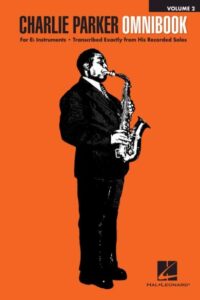
- Chano Pozo: This collaboration was culturally and musically seismic. Pozo’s mastery of Afro-Cuban rhythms gave Gillespie’s music a new, primal power. Compositions like “Manteca” and “Tin Tin Deo” were not mere novelties; they were fully integrated works that expanded the rhythmic palette of jazz forever.
- Cab Calloway & Earl Hines: These big bands were the “finishing schools” where Gillespie honed his craft and began experimenting with the ideas that would become bebop. He also worked with Billy Eckstine’s seminal orchestra, which served as a incubator for young modernists like Parker and Dexter Gordon.
- Oscar Peterson, Sonny Rollins, and Others: Throughout the 1950s, Gillespie recorded with many of the era’s greats. His duo albums with Oscar Peterson are masterclasses in swing and melodic invention, while his work with Sonny Rollins on the album “Sonny Side Up” is a thrilling tenor saxophone battle moderated by Dizzy’s brilliant trumpet.
- Quincy Jones: Jones was a young arranger and trumpeter in Gillespie’s big band in the 1950s. Their collaboration helped shape the sound of modern big band writing, blending bebop complexity with a sleek, powerful ensemble sound.
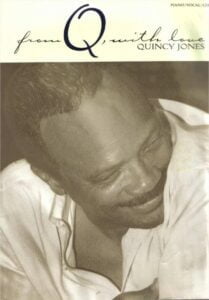
Chord Progressions and Music Harmony
Gillespie was a master of harmony. Bebop was built upon the foundation of standard song forms, but it subjected them to a process of “harmonic substitution” and enrichment.
- Tritone Substitution: This was a cornerstone of bebop harmony. The tritone is the interval of a diminished fifth/augmented fourth (e.g., C to F#). Because the tritone is shared between two dominant seventh chords a tritone apart (e.g., G7 and Db7 both contain the notes B and F), a musician can substitute one for the other. In a ii-V-I progression (Dm7 – G7 – Cmaj7), a bebop player might substitute the G7 with a Db7, creating a chromatic bass line (D – Db – C) and adding harmonic tension and release.
- Chord Alterations: Bebop musicians frequently altered the extensions of dominant seventh chords, using the b9, #9, #11, and b13 to create greater dissonance and a more powerful resolution. A simple F7 chord could become an F7#9b13, providing a wealth of new, “outside” notes for improvisation.
- Reharmonization of Standards: Gillespie’s original compositions often used the chord progressions of existing standards as a starting point. His iconic “Anthropology” is built on the chord changes of George Gershwin’s “I Got Rhythm,” a progression so commonly used it is known as “Rhythm changes.” He kept the harmonic skeleton but composed a new, blisteringly fast melody on top of it.
Influences and Legacy
Influences: Gillespie’s primary early influence was Roy Eldridge, from whom he inherited a fiery, aggressive approach to the trumpet. Harmonically, he was deeply influenced by pianists like Art Tatum and Thelonious Monk, who were exploring advanced chord voicings and reharmonization.
Legacy: Dizzy Gillespie’s legacy is immeasurable.
- The Codification of Bebop: He was the primary teacher and theorist who passed the new language to the next generation, including Miles Davis, Fats Navarro, and Clifford Brown.
- Afro-Cuban Jazz: He opened the door for the permanent integration of Latin rhythms into jazz, paving the way for Machito, Tito Puente, and eventually, salsa and Latin jazz fusion.
- The Modern Jazz Trumpet: Every jazz trumpeter who emerged after 1945 owes a debt to Gillespie. His technical innovations and harmonic language became the new standard.
- Jazz Ambassador: His State Department tours in the 1950s and ’60s projected a positive, sophisticated image of American culture and African-American artistry during the Cold War, breaking down cultural and political barriers.
- The Joy of Jazz: In an era where jazz could be perceived as overly serious or inaccessible, Gillespie’s irrepressible humor, warmth, and sheer joy in performance made the music welcoming. He proved that music of great intellectual depth could also be celebratory.
Most Known Compositions and Performances
Compositions:
- “A Night in Tunisia” (1942): Perhaps his most famous composition, featuring a haunting, exotic melody and a legendary, difficult trumpet solo break.
- “Salt Peanuts” (1942): A bebop anthem with a catchy, shouted riff.
- “Groovin’ High” (1944): A beautiful melody based on the changes of “Whispering.”
- “Woody ‘n’ You” (1944): A sophisticated composition that became a jazz standard.
- “Manteca” (1947, with Chano Pozo): The foundational track of Afro-Cuban jazz.
- “Con Alma” (1954): A later, beautiful and harmonically rich ballad that has become a standard.
- “Birk’s Works” (1957): A bluesy, minor-key composition that showcases his compositional depth.
Performances:
- “Hot House” (1953) with Charlie Parker: From the legendary “Jazz at Massey Hall” concert, the definitive live document of bebop.
- “Salt Peanuts” (1945) with Charlie Parker: The studio version that defined the tune’s manic energy.
- “Manteca” (1947) with his big band: The revolutionary recording that changed jazz.
- His solo on “I Can’t Get Started” (1945): A masterpiece of ballad playing, showcasing his beautiful tone and emotional depth.
- Any number of performances of “A Night in Tunisia,” each featuring his incredible, high-speed breaks.
Filmography and Discography
Filmography:
Gillespie appeared in several films, often as himself or in musical cameos.
- Jivin’ in Bebop (1947) – A “soundie” featuring his band.
- The Winter in Lisbon (1992) – His final film role.
He also made numerous television appearances on variety shows and in documentaries, such as Ralph Gleason’s “Jazz Casual” series.
Discography (A Select Few from a Vast Output):
- Groovin’ High (1945) – Early small-group bebop with Parker.
- The Complete RCA Victor Recordings (1995 compilation of 1937-49 work) – Essential for his early development.
- Jazz at Massey Hall (1953) – The legendary “Quintet of the Year” with Parker, Powell, Mingus, and Roach.
- Afro (1954) – A seminal album exploring Latin and African themes.
- Manteca (1958) – A classic big band album.
- Gillespiana (1960) – A suite composed and arranged by Lalo Schifrin for Gillespie.
- Dizzy on the French Riviera (1962) – A brilliant live album with a strong soul-jazz feel.
- The New Continent (1962) – More fantastic Lalo Schifrin arrangements.
- The Dizzy Gillespie Quintet – In The Beginning (1966) – Featuring a young Lalo Schifrin on piano.
Dizzy Gillespie was more than a musician; he was a force of nature. He took the raw materials of jazz and reshaped them into a new, modern art form. He was a bridge between swing and bebop, between American jazz and world music, between the esoteric and the popular. His puffed cheeks and bent trumpet were the vessels for one of the most brilliant and forward-thinking musical minds of the 20th century, a mind that forever changed the sound of jazz and left a legacy of joy, innovation, and boundless creativity.
Browse in the Library:
Or browse in the categories menus & download the Library Catalog PDF:
